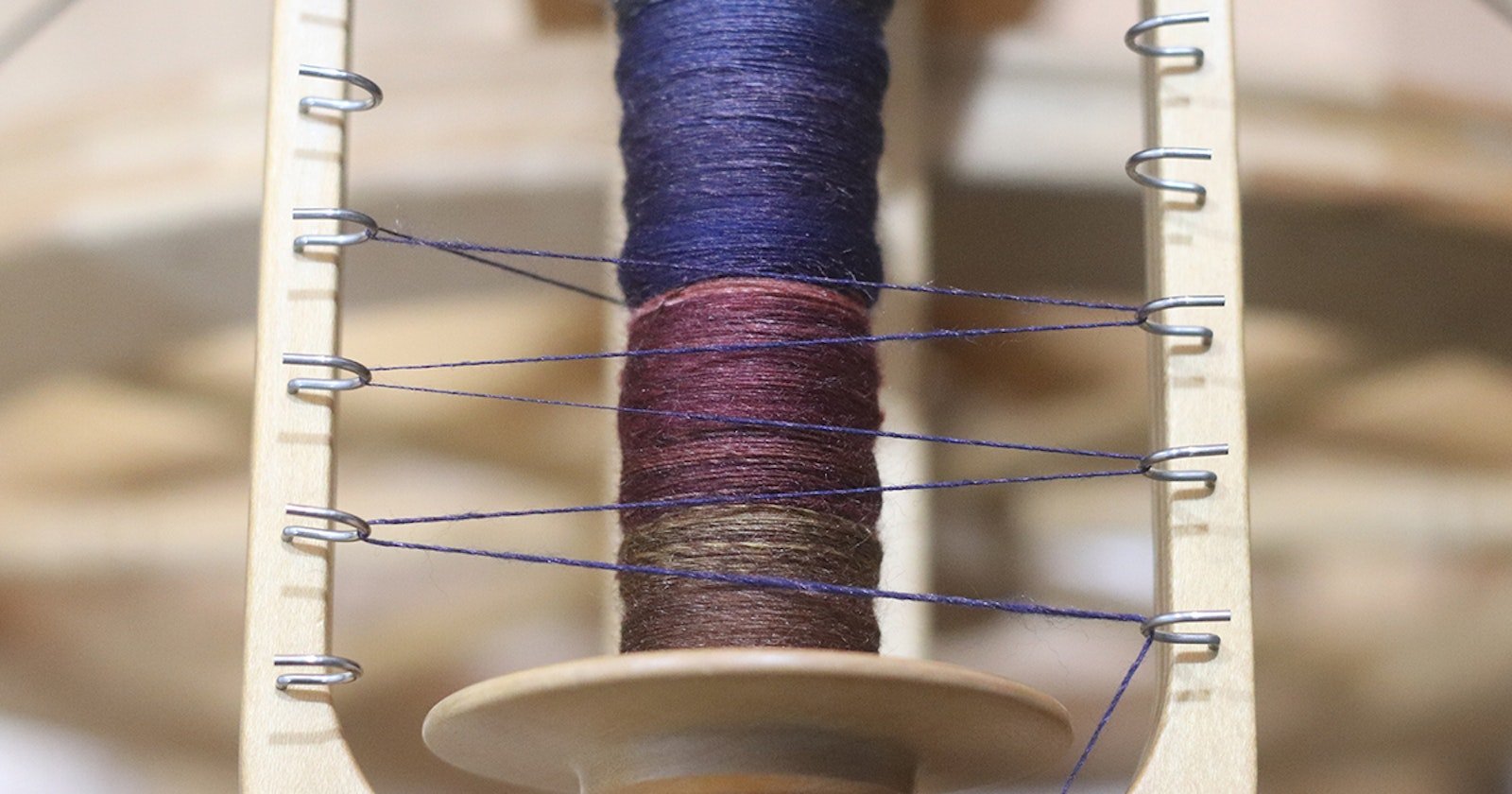I have a confession: I am a fast treadler. I have feet of fury when I spin. I discovered that I tend to keep the same treadle speed no matter what the fiber, and you know, that can lead to trouble. I don’t want to end up with a bobbin full of clothesline! When I spin, I zone out and nestle right into my default yarn. So, I need a technique that accommodates how I spin. If you spin like me, let me introduce you to cross-lacing.
Cross-lacing allows you to slow down your uptake; it’s a tension aid that gives you more control. With cross-lacing, the twist has to travel a bit farther between the bobbin and the fiber supply. You can have your twist travel a short or long distance depending on the amount of tension you need. You do this by zigzagging your yarn across your flyer, and you adjust the amount of tension by increasing or decreasing the number of hooks you zigzag it through.
How to lace your yarn, side to side
Cross-lacing can make your bobbin resemble a jewelry-heist scene in a movie, but trust me, it works! I promise, it’s as easy as lacing your sneakers. Flyers that are hooked on both sides are the simplest to use for this technique; however, you can lace any flyer. Carry your singles yarn from one side of the flyer to the other and back again in a zigzag motion, lacing the yarn on the hooks of your flyer. If your flyer has hooks on only one side, add loops of string or rubber bands on the non-hooked side. Now spin your heart out, while moving your singles yarn as needed from hook to hook and alternating hooks on each side as you fill your bobbin.
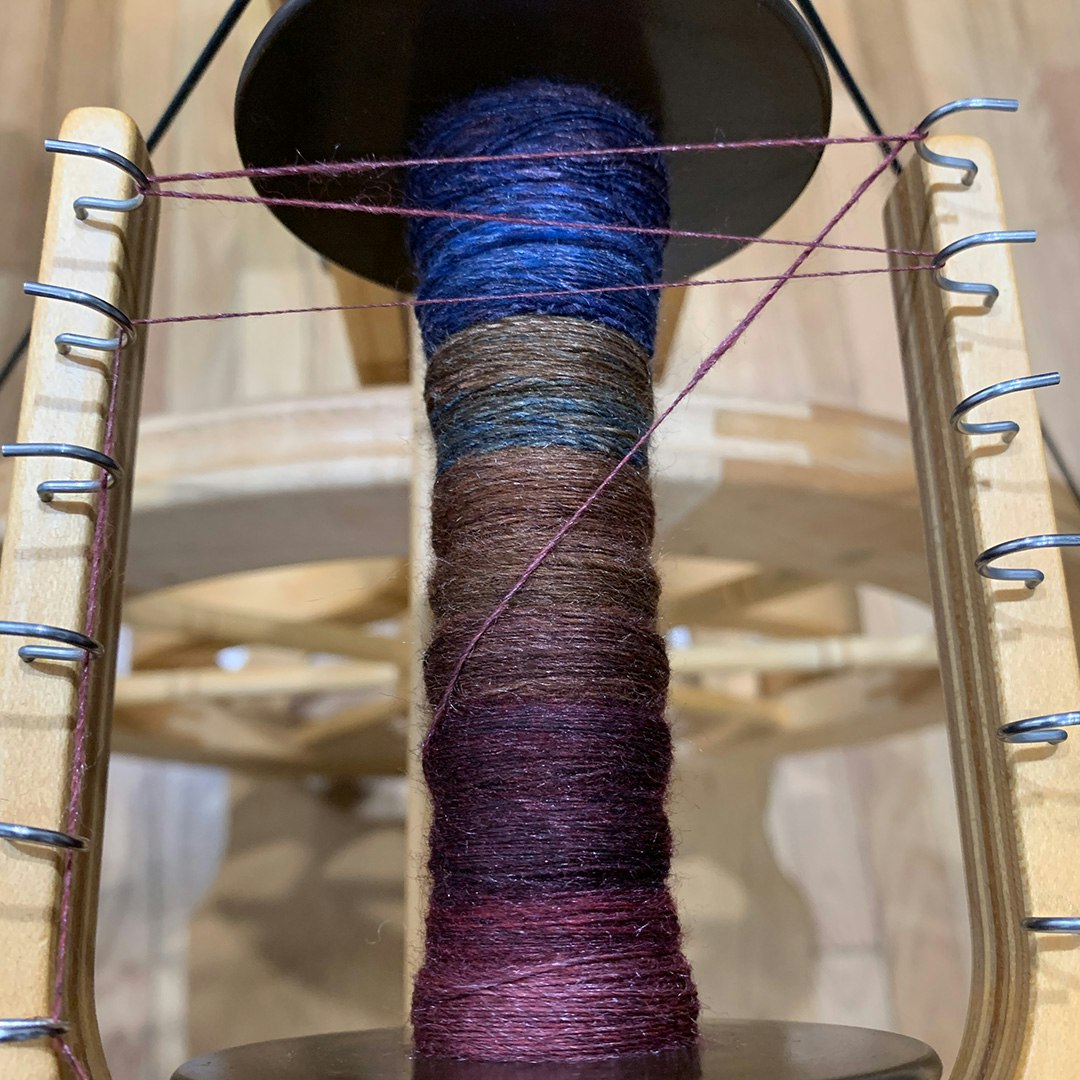
What happens when you come to the end of your bobbin? Simply cross-lace the final 2 hooks from 1 hook to the other and back until you reach the desired tension.
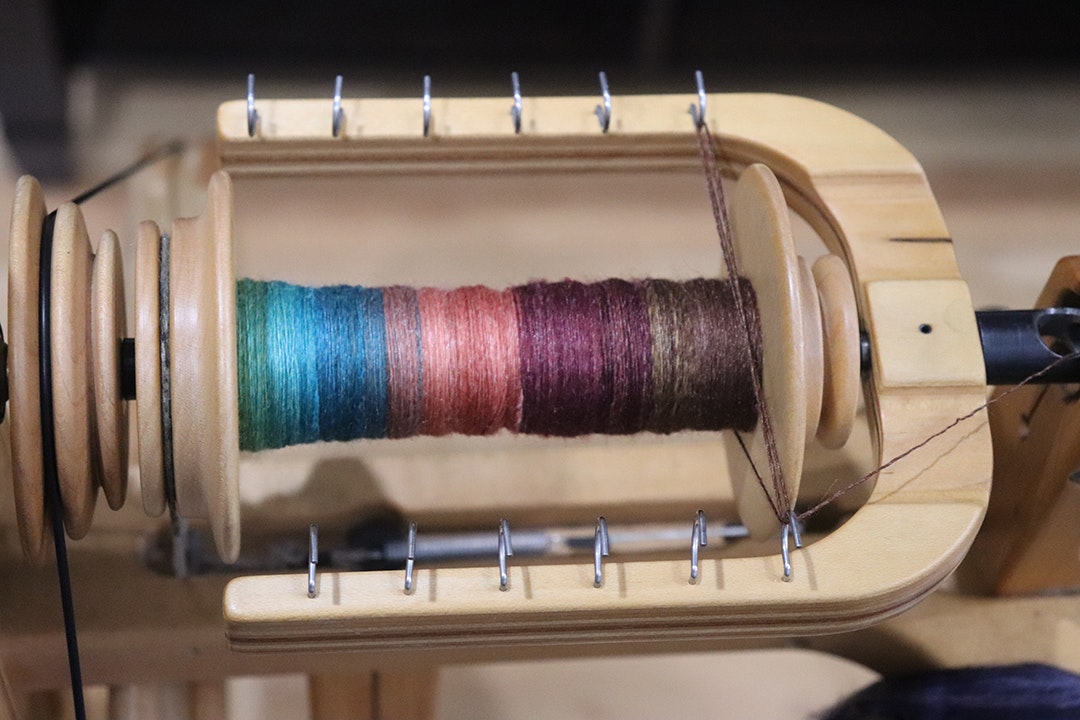
Emonieiesha demonstrates cross-lacing at the end of a bobbin.
When you’ve come to the end of your bobbin, it’s time to begin again. Take your singles yarn and pull it diagonally to the rear of your bobbin, placing it on your first hook. Next, cross-lace your bobbin by beginning at the first hook and zigzag to your desired tension.
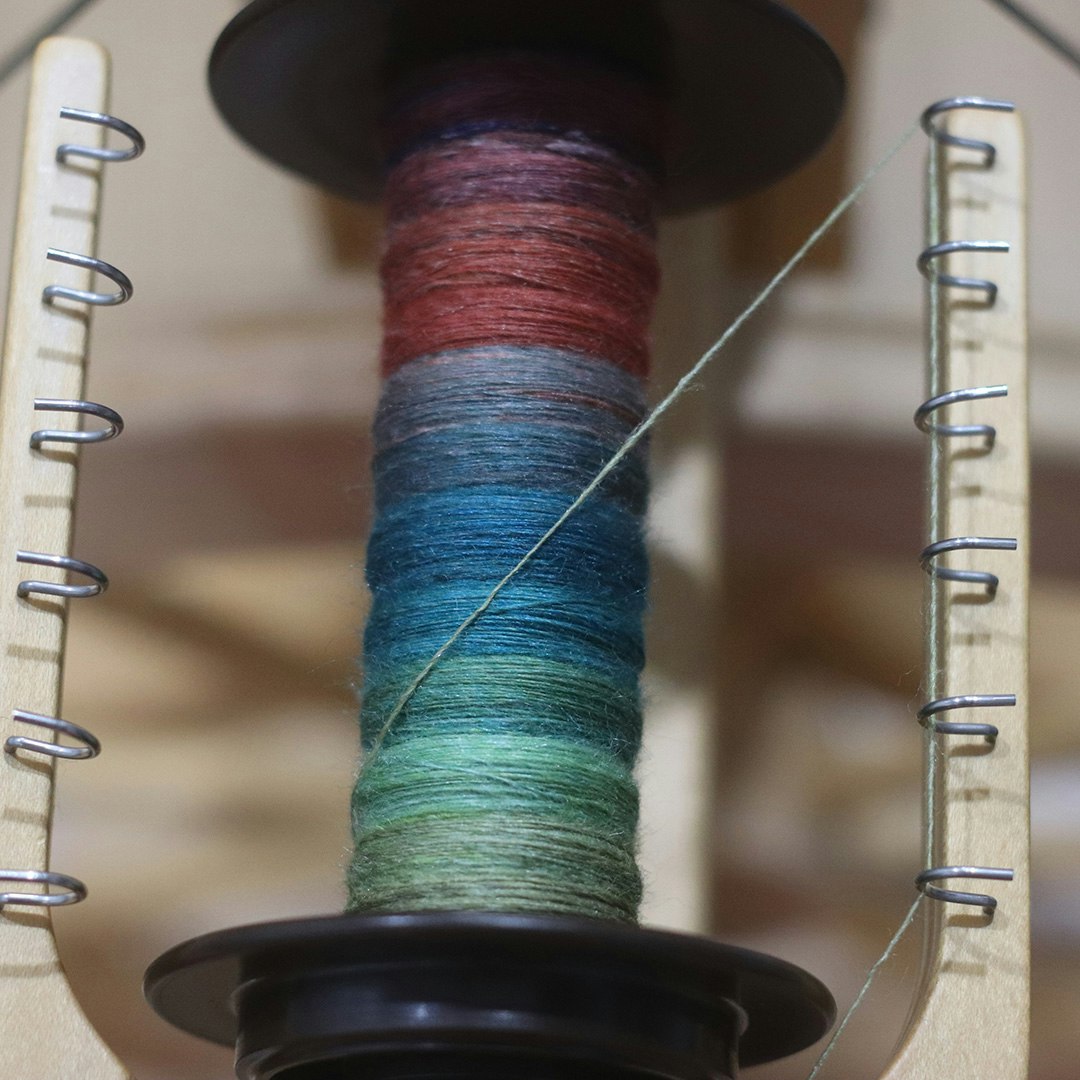
After Emonieiesha comes to the end of a bobbin, she brings her singles to the first hook before she begins to cross-lace again.
I let the singles yarn sit in all the hooks after the diagonal lacing to show how it’s done, but once your singles is diagonal, hook it on the first hook to the rear of your bobbin and continue to zigzag to your desired tension.
Cross-lacing allows for a really smooth bobbin, too, with minimal hills and valleys.
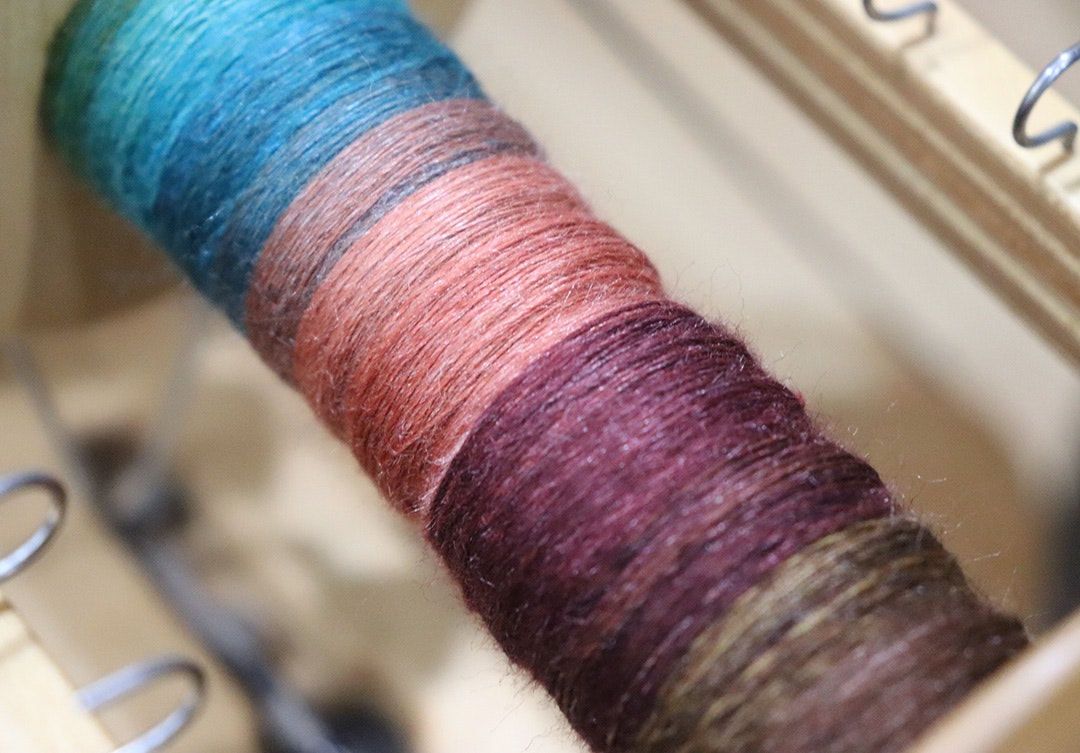
With practice, you, too, can have a smooth bobbin of singles.
Cross-lacing is a spinning technique that’s a must-try for every handspinner!
Emonieiesha Hopkins is a Chicago, Illinois, fiber evangelist. She loves to gather her wool and good fiber friends, any time, any place.
Originally published March 30, 2020; updated March 25, 2024.

